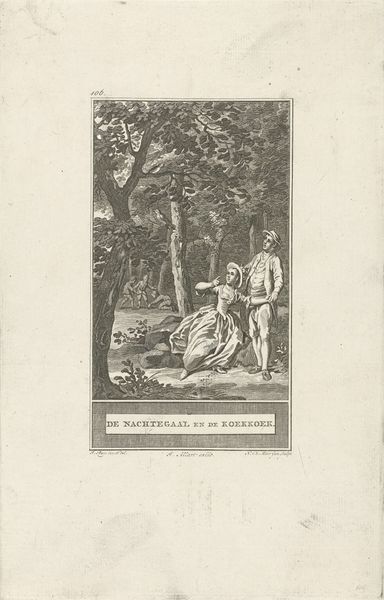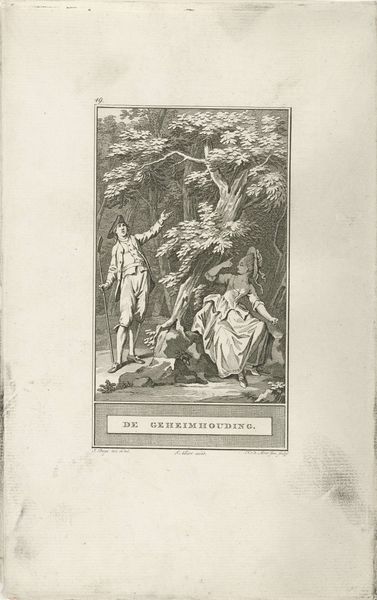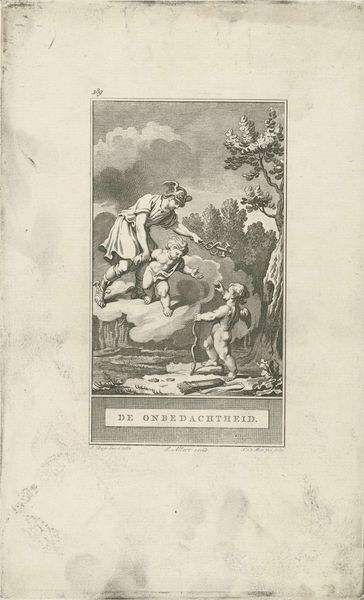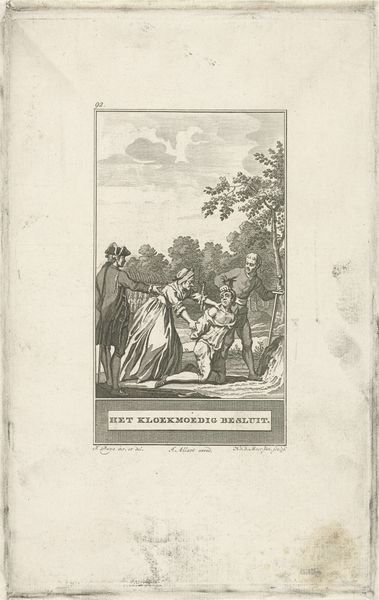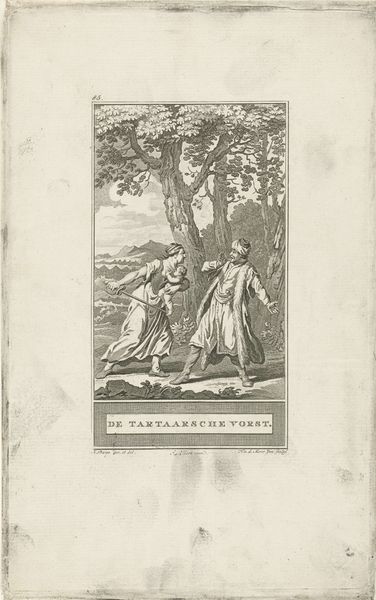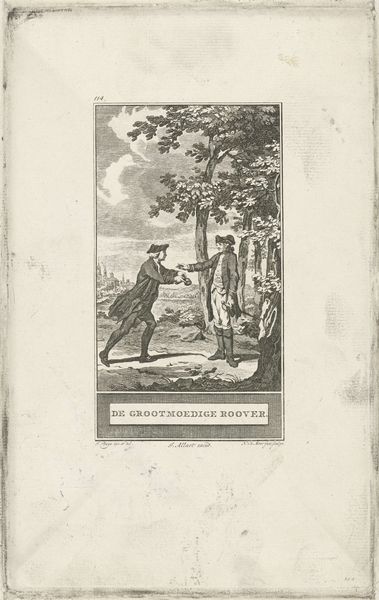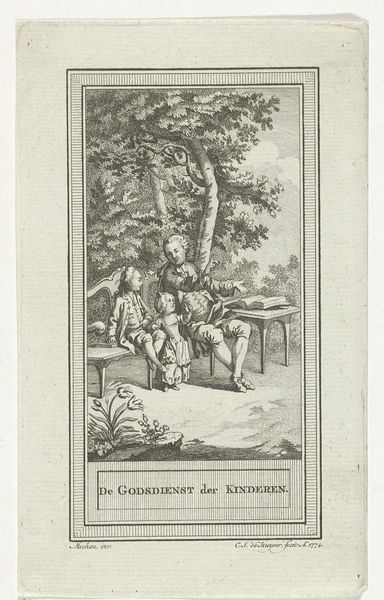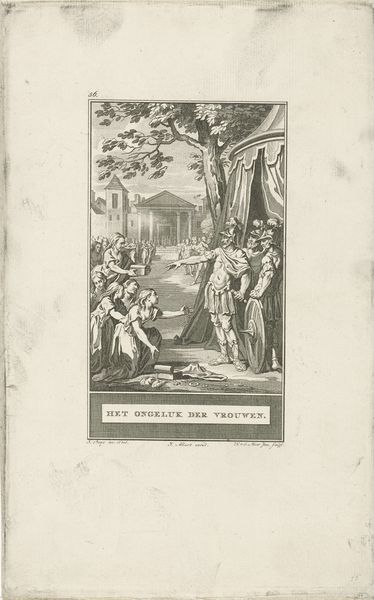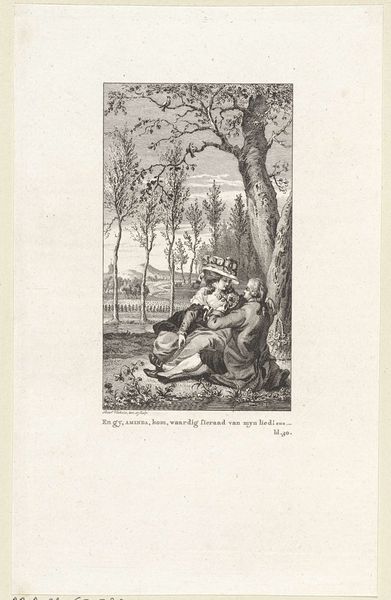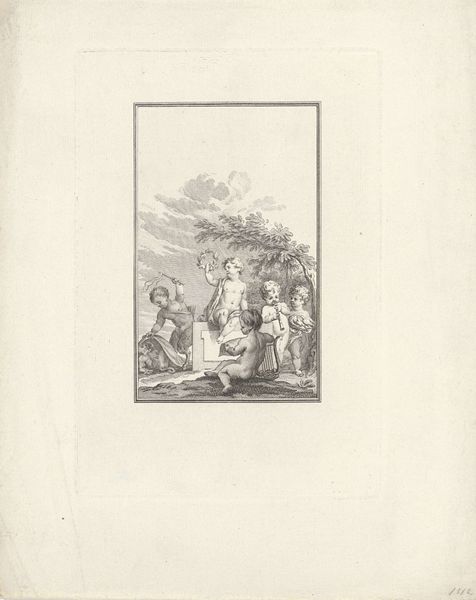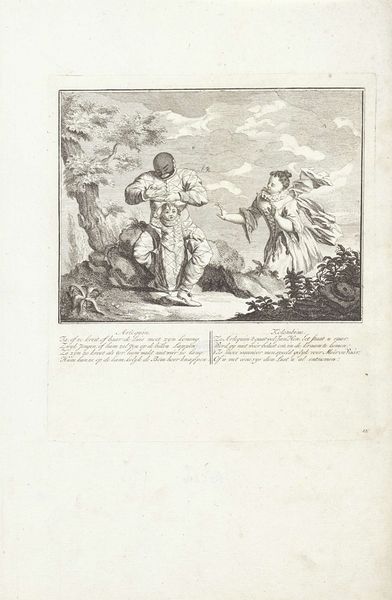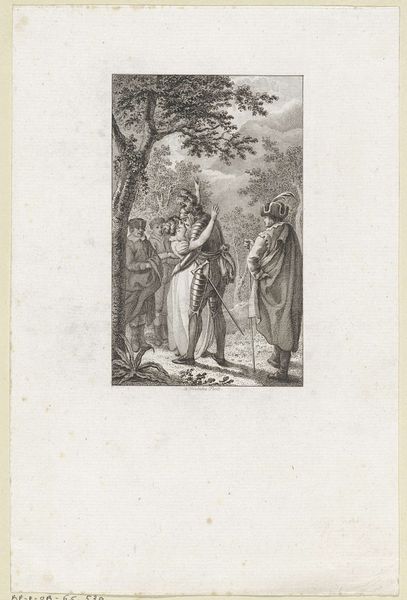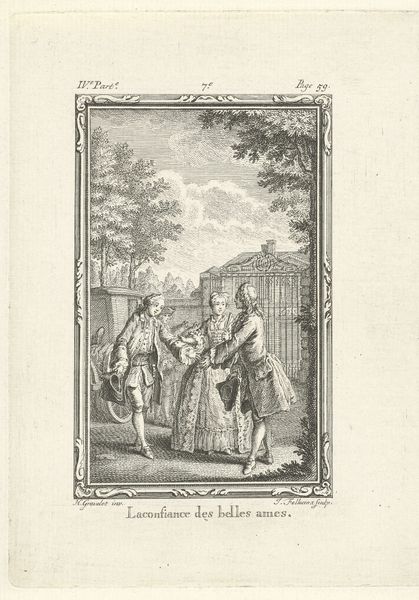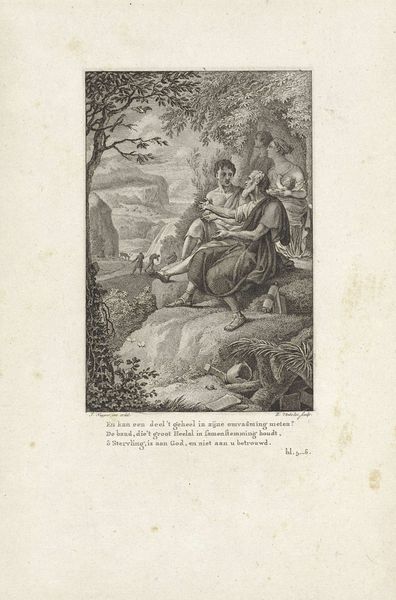
Dimensions: height 245 mm, width 151 mm
Copyright: Rijks Museum: Open Domain
Editor: This is "Young Thresher" by Noach van der Meer the Younger, an engraving from sometime between 1778 and 1785. I find it charming, with its depiction of rural life. The line work is very delicate. How do you interpret this piece from a formal perspective? Curator: Thank you. What I observe first is the carefully constructed composition. The figures are nestled within a frame of nature: the tree on the left, balanced by the suggestion of buildings on the right. Note how the lines direct your eye to the interaction between the figures, even though the scale is very small. Editor: I see that now, like a carefully staged play. Is the line work itself significant? Curator: Absolutely. The artist’s skill lies in modulating the thickness and direction of lines to create light, shadow, and texture. Consider how the engraver varies the marks to give weight and volume to the figures’ drapery. These patterns and contrasts create visual interest independent of the narrative. Editor: So even without knowing anything about threshing, the image works because of the contrast between light and dark? Curator: Precisely. Focus on the intrinsic relationships: lines, shapes, contrasts. It's the interplay of these visual elements that creates the artistic impact, regardless of the subject matter. The semiotic analysis provides the initial clues, but structuralist approaches are a way of organizing elements within art pieces, helping with its study and understanding. Editor: I'm beginning to see that there’s much more here than first meets the eye. The composition and the skillfull engravings really contribute a lot. Curator: Indeed. By appreciating the formal elements, one gains a deeper understanding of the artistic intent and the print’s inherent qualities.
Comments
No comments
Be the first to comment and join the conversation on the ultimate creative platform.
